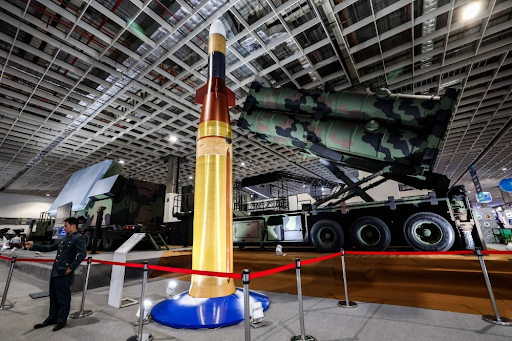Description
Copyright infringement not intended
Picture Courtesy: CNN
Context:
Ukraine and the U.S. signed a critical minerals deal granting American access to Ukraine's rare earth resources for reconstruction and strategic cooperation.
What Are Critical Minerals?
Critical minerals are raw materials considered essential for economic development, national security, and the transition to clean energy technologies. They include rare earth elements, lithium, cobalt, nickel, and dozens of other minerals vital to modern industries but subject to supply risks due to geopolitical factors, concentration of production, and other variables.
|
Rare earth elements comprise a group of 17 chemically similar metallic elements. Despite their name, most are relatively abundant in the Earth's crust, but they rarely occur in concentrated, economically viable deposits.
|
Strategic Importance of Critical Minerals
- Clean Energy Transition: Electric vehicles, wind turbines, and solar panels all require significant amounts of critical minerals.
- Defense Applications: Many critical minerals are essential components in missile guidance systems, radar technology, and other defense applications.
- Supply Chain Security: With China dominating production of many critical minerals, particularly rare earths (controlling approximately 60% of global production and 85% of processing capacity), Western nations are seeking to diversify supply chains.
- Technological Innovation: Advanced electronics, telecommunications, and emerging technologies all depend heavily on critical minerals.
Ukraine's Critical Mineral Resources
Ukraine possesses significant deposits of critical minerals that position it as a potentially major alternative supplier to China. The country has:
- 22 of the 34 minerals identified by the European Union as critical.
- One of Europe's largest confirmed lithium reserves, estimated at 500,000 metric tons.
- Approximately 20% of global graphite resources.
- Various rare earth elements including lanthanum, cerium, neodymium, erbium, and yttrium.
- Titanium reserves in northwestern and central regions.

|
Note: Ukraine currently has no commercially operational rare earth mines. Development of these resources would require significant investment, technical expertise, and time.
|
Impact of Russian Occupation
- About 40% of Ukraine's metal resources are now under Russian occupation.
- The bulk of Ukraine's coal deposits are now controlled by Russia.
- Two major lithium deposits (in Donetsk and Zaporizhzhia) have been occupied.
- Ukraine's only coking coal mine outside Pokrovsk was closed in January 2025 due to the Russian military threat.
Highlights of Ukraine-U.S. Critical Minerals Deal
- Establishment of a joint investment fund dedicated to Ukraine's reconstruction.
- U.S. preferential access to new Ukrainian minerals deals.
- Ukraine maintains ownership of its subsoil resources.
- Ukraine retains decision-making authority regarding "what and where to extract".
- No debt obligations for Ukraine under the agreement.
- Compliance with Ukraine's constitution and its campaign to join the European Union.
- U.S. financial contribution to the joint investment fund.
- Potential provision of new assistance, including air defense systems (mentioned by Ukrainian officials).
Limitations of the agreement
- No concrete U.S. security guarantees for Ukraine, which was reportedly one of Ukraine's initial goals.
- No specific commitments regarding the amount of U.S. investment.
- No detailed roadmap for developing specific mineral deposits.
- No explicit mention of technology transfer for mineral processing.
Strategic Implications
For Ukraine
- Economic Reconstruction: Access to investment for rebuilding infrastructure damaged during the war.
- Resource Development: Technical and financial support to develop currently untapped mineral resources.
- Revenue Generation: Potential long-term income stream from mineral extraction and processing.
- Strategic Alignment: Deepened economic ties with the United States while maintaining EU compatibility.
- Defense Support: Possible additional military assistance, including air defense systems (though this was not confirmed by U.S. officials).
For the United States
- Supply Chain Diversification: Reducing dependence on China for critical minerals.
- Green Energy Transition: Securing resources necessary for clean energy technologies.
- Strategic Competition: Countering Chinese dominance in the critical minerals sector.
- Supporting Ukraine: Demonstrating continued commitment to Ukraine's sovereignty and reconstruction.
- National Security: Securing access to minerals essential for defense applications.
Global Market
- Supply Diversification: Potential new source of critical minerals outside China's sphere of influence.
- Market Competition: Possible downward pressure on prices if Ukrainian production comes online at scale.
- Investment Patterns: May trigger increased interest in critical mineral exploration and development in other countries.
- Geopolitical Realignment: Consolidation of Western supply chains separate from China.
Must Read Articles:
Ukraine's Mineral Resources
Source:
THE HINDU
|
PRACTICE QUESTION
Q. Critically examine how the global demand for critical minerals is reshaping international supply chains and influencing national strategies for sustainable development. What role does India play in this evolving landscape? 250 words
|












